Like a Hammer: Commanding Presence and Claiming Identity With Bold Color, Pride, and Expression
Review of "Like a Hammer" at SAM.
Written by TeenTix Newsroom Writer Sumeya Block, and edited by Teen Editor Joshua Fernandes!
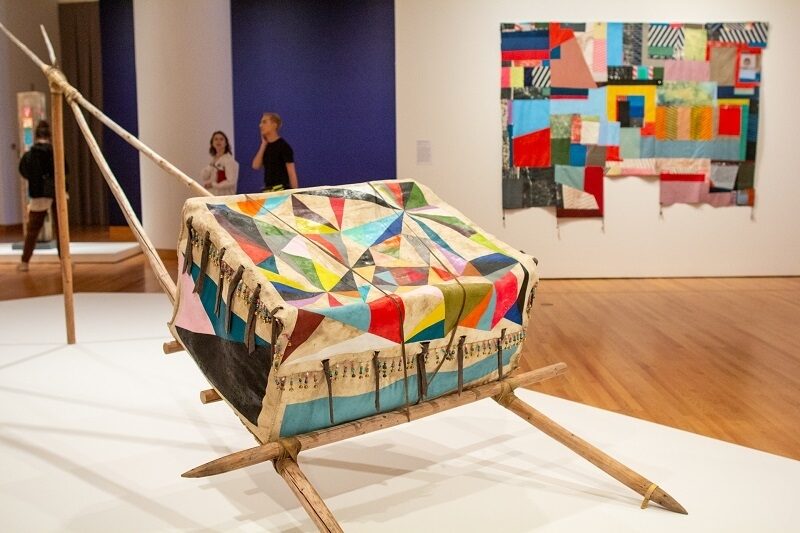
Jeffrey Gibson’s loud, emotional, and thought-provoking exhibit "Like a Hammer" is filled with pops of color, ornate beading, chaotic shapes, celebrations of Choctaw-Cherokee culture, and nods to the LGBTQ+ community. Gibson creates a space for viewers to celebrate what makes them different and recognize the hardships society creates.
When I first walked into "Like a Hammer," I was met with bright colors, bold lettering, and various household items that had been repurposed into vibrant and chaotic installations. What immediately caught my eye was an ironing board covered in slashes of neon pink, yellow, and green and a massive flag sewn with patches of different textured fabrics. When I walked into the exhibit I could feel the energy of Gibson’s work animating the room. I could taste the joy, hardship, and care exuded in every stitch and pop of color. What particularly caught my eye was a bright colored travois or parfleche, a large container pulled by horses that is most commonly made by Native American Women.
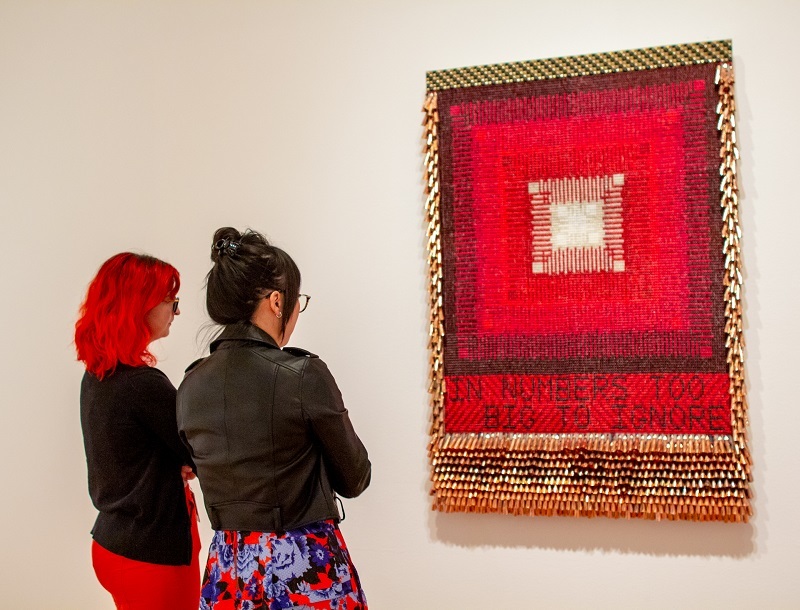
Gibson creates his own travois/parfleche in "Like a Hammer," covered in similar beading to what Native women use. As he says, the bright colors and beading technique are meant to bring out the abstract design, craft and art put into it. To take note of the important role Native women hold in art making and their communities, much of Gibson’s art honors Native women and their struggles. Gibson brings attention to the horrifying reality that thousands of Native women are missing or murdered a year with a large canvas titled "In Numbers Too Big To Ignore," which is covered with alarming washes of red beading. At the bottom in thin black letters the statement “IN NUMBERS TOO BIG TO IGNORE” a statement that rings true and demands acknowledgement and action.Je
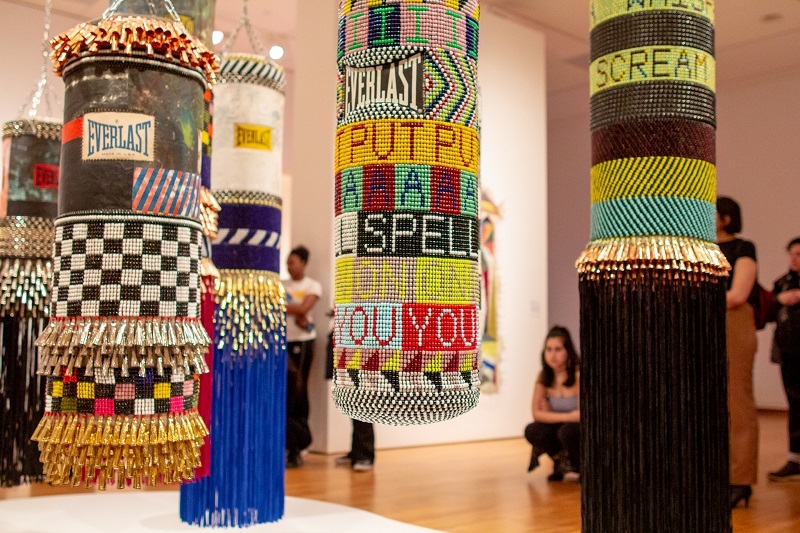
In his work, Gibson frequently questions the rigid expectations society puts on him and uses this tension to express himself. An example of how this manifests in his creations are his Everlast punching bags. An item commonly associated with violence and male competition is changed into an ornament with story, each bag is adorned with beads and bells as a reference to powwow culture. They have individuality, some with popular song lyrics on them such as “I PUT A SPELL ON YOU” and “FROM A WHISPER TO A SCREAM.” Others are washed out, with splotches of red and grays. Another important part of "Like a Hammer" is exploring the Queer culture of the night clubs Gibson went to and growing up part of the LGBTQ+ community. He expresses his pride in his sexuality through his creations: his punching bags are adorned with fun and energetic tassels that have a semblance to skirts, or his piece “DON'T MAKE ME OVER” which features a Pride curtain.
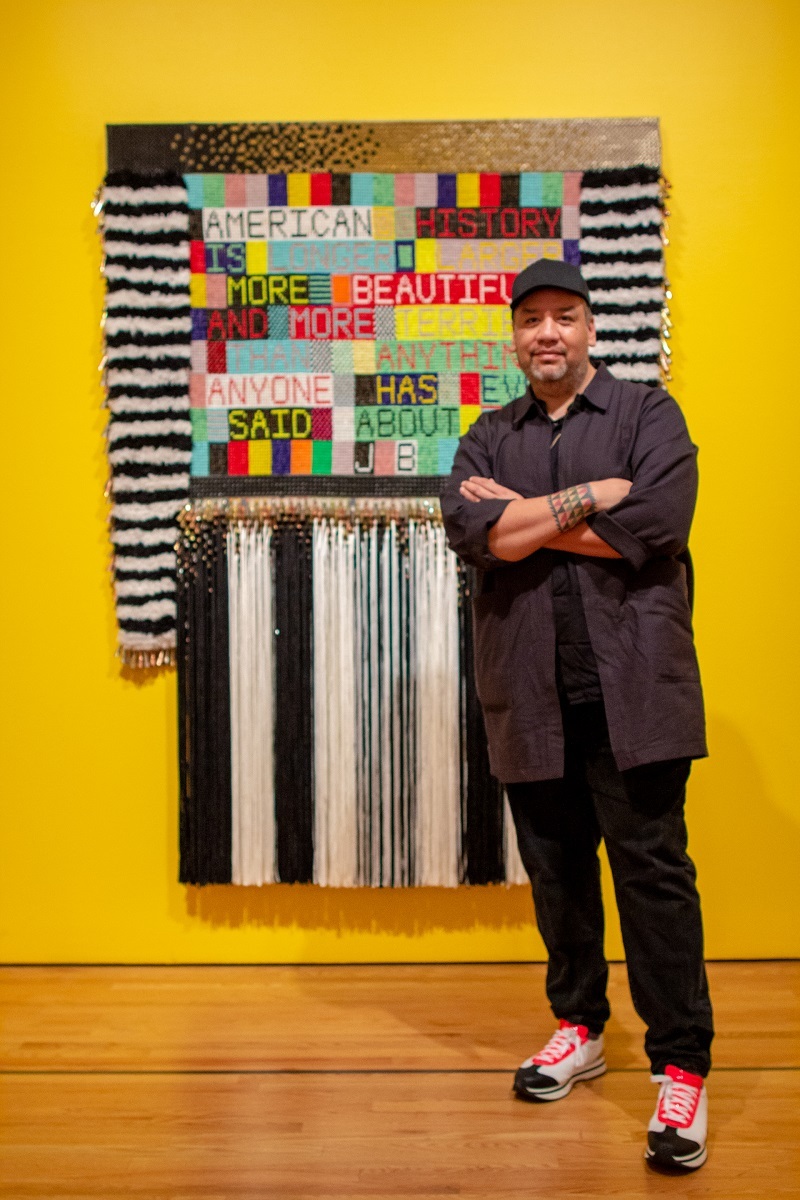
Gibson also pulls from pop culture, incorporating quotes from others into his beaded canvases, such as the James Baldwin quote Gibson paraphrases: “American History is longer, larger more beautiful and more terrible than anything anyone has ever said about it.” This culminates with the experimental and raw "DON’T MAKE ME OVER" mentioned before, a thin curtain in the colors of the Pride Flag covered in phrases including, “DON'T PICK ON THE THINGS I DO,” DON’T PICK ON THE THINGS I SAY,” and “ACCEPT ME FOR WHAT I AM.”
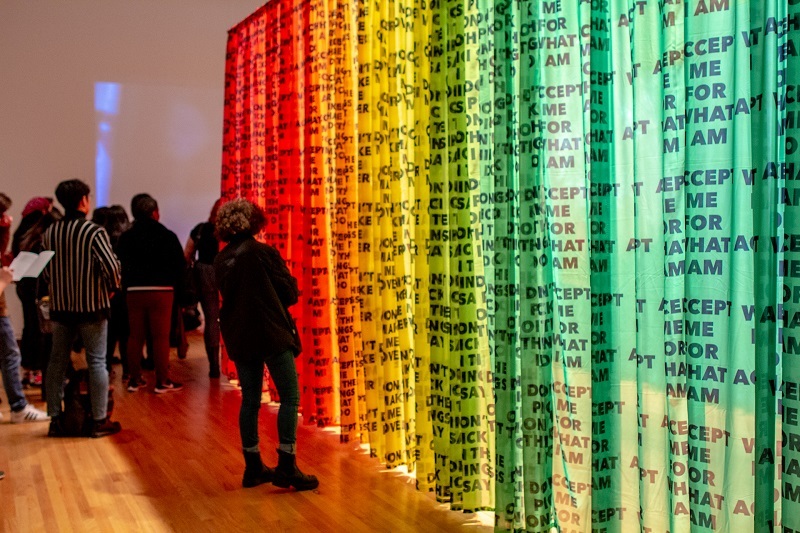
"Like a Hammer" is an important exhibit that creates discussion between viewers about their own identities and how they can express them. Through his art, Gibson communicates that nobody is a singular thing; every individual is multifaceted and cultural traditions and celebrations are much deeper and personal then they are presented. What Gibson does beautifully is express his pride in himself and push viewers to do the same. This is evident from the videos scattered around the exhibit, one, a video of Gibson reflecting on his work, the other a video depicting Native American celebrations and powwows and the significance behind them. As Gibson says in his video, “What I hope the work is able to do is is to send a signal to not just queer youth on the reservation or in communities, but maybe people who just feel like they need an expansiveness that's not presented to them in that context. That there is a community for them that wants to support them and wants to hear from them.” Gibson evokes this through his ornate beading, bold canvases, and transformative designs, turning even the most ordinary items into a work of art, or as Gibson says, a creation. "Like a Hammer" commands presence and claims identity with splashes of vibrant colors, beading, and most importantly, pride.
Lead photo caption: "Like a Hammer" at SAM. Photo by Natali Wiseman.
The Teen Editorial Staff is made up of 5 teens who curate the review portion of the TeenTix blog and manage the TeenTix Newsroom. More information about the Teen Editorial Staff can be found HERE.
The TeenTix Press Corps promotes critical thinking, communication, and information literacy through criticism and journalism practice for teens. For more information about the Press Corps program see HERE.


